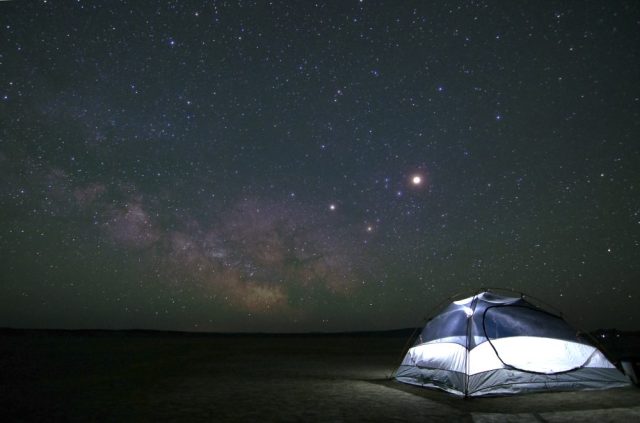Boasting some of the darkest skies in the world, Death Valley National Park is an awe-inspiring spot for stargazing. Kids’ imaginations will be sparked as they learn about constellations, planets and our place in the universe. If you’re looking for an educational, outdoor-based vacation this spring, then head to Death Valley in what will be an out-of-this-world experience.
The Dark Skies of Death Valley
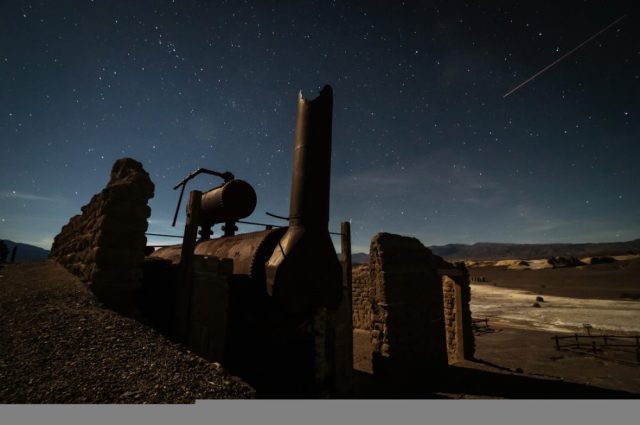
Death Valley National Park has Dark Sky Park Gold Tier status, which means light pollution is minimal. With no orange haze on the horizon from city lights, the park's vast wilderness has some of the darkest night skies in the country, allowing you to see far more stars, planets and meteors than anywhere else. Park ranger, Matthew Lamar, says showing kids these special places is important. “As a society we know more about the night sky than we have ever known before, but as individuals most of us have never been more disconnected and less able to experience it from where we live,” he says.
Stargazing Parties
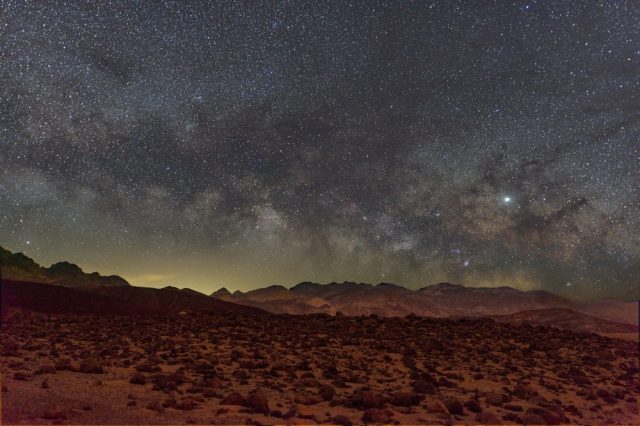
The rangers at the park offer a variety of night sky events throughout the year. Rangers plan to offer a star party in late January, where visitors can peer through a telescope and learn about the constellations. Park rangers will partner with NASA’s Jet Propulsion Lab and CalTech along with others to host its annual Dark Sky Festival in February. This family-friendly event will feature talks, field programs and telescope time. Keep an eye on the Park’s calendar, or ask a ranger at the Furnace Creek Visitor Center for upcoming events during your visit.
Pop-Up Star Camp
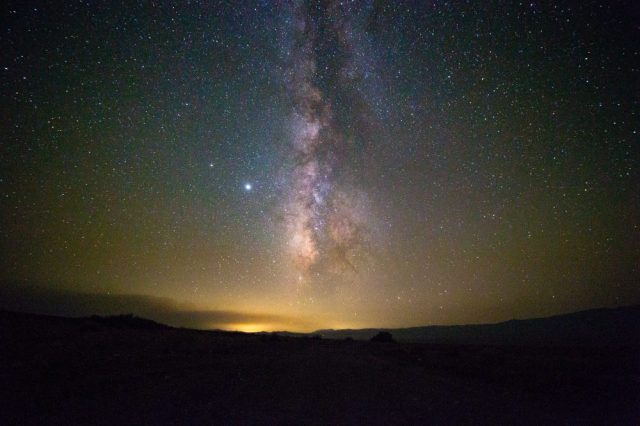
In addition to the National Park Service events, there is another unique and fun way to enjoy the night sky with your family in Death Valley. Eastern Sierra Observatory, which runs overnight stargazing camps from Bishop, has a pop-up star party in Death Valley between March 18 to April 24. Each pod can fit two adults and up to three kids. Campsites have a picnic table and fire ring, but you must supply your own food and bedding. This set-up is perfect for parents who can stay up to stargaze after tucking up tired children in the cozy pod.
Since the pandemic, interest in stargazing has soared, says Scott Lange, owner of Eastern Sierra Observatory. According to him, springtime is a good time to stargaze in Death Valley because the Milky Way is visible and when the moon is in its darkest phase, you can see the core of our galaxy. Scott brings little geodesic cabins, beds, the eight-inch telescope and his knowledge of the night sky while you bring the family and sense of curiousity.
DIY Star Camp
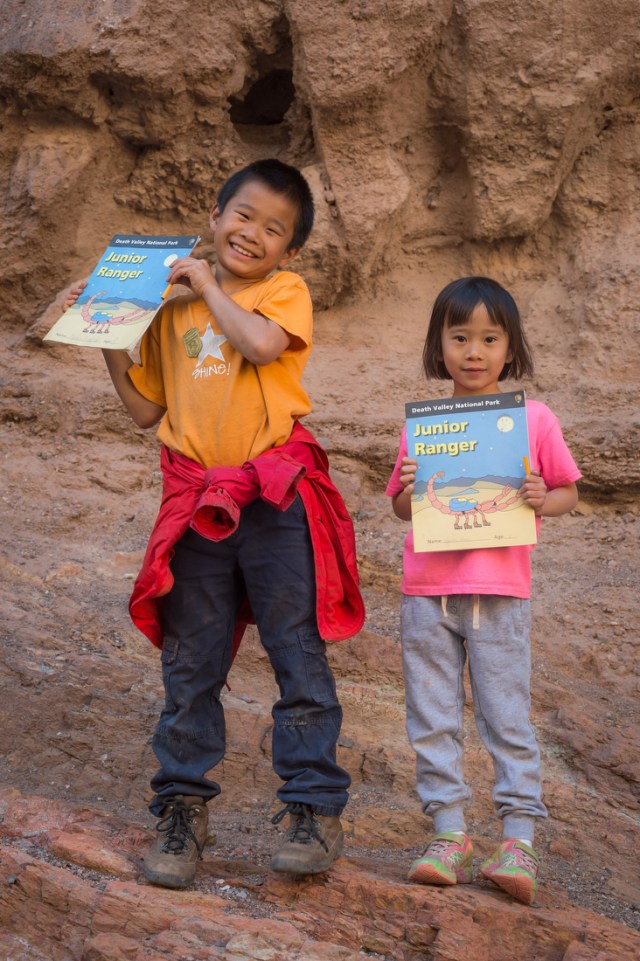
Families don’t need to attend a talk, or use a telescope, to enjoy stargazing with their kids. If you want to create your own Death Valley star camp this spring break, Matthew has some tips to make the most of your experience.
- Head to a dark area of the park. Although the National Park Service has made great efforts to keep light pollution to a minimum, there are brighter areas of the park. Stay away from the hotels at Furnace Creek and Stovepipe Village and seek out quieter areas for a better view. If you don’t mind driving back in the dark, Ubehebe Crater is a great spot.
- Go during the new moon. Check the phases of the moon and try to pick a date when the moon is not visible, or is smaller, for a darker sky.
- Take a headlamp with a red light. Whenever you use a bright light, your eyes have to readjust. Some headlamps now come with a red light option, which allows you to keep your night vision.
- Take blankets to lay on, or camping chairs, and warm clothes. It can get cold in Death Valley at night, so you need to be comfortable while staring at the skies.
- Grab a Junior Ranger Night Sky Explorer program from the visitor center. The Junior Ranger programs are brilliantly designed for kids and contain a lot of information. Kids are more engaged when there’s a special badge as a reward.
- Download a stargazing app on your smartphone that does not require an internet connection to work, before you get to the park. Apps are a great way to figure out what you’re looking at and the stories behind the constellations. There is little to no cellphone coverage in most areas of the park, so plan ahead.
Day Time in Death Valley
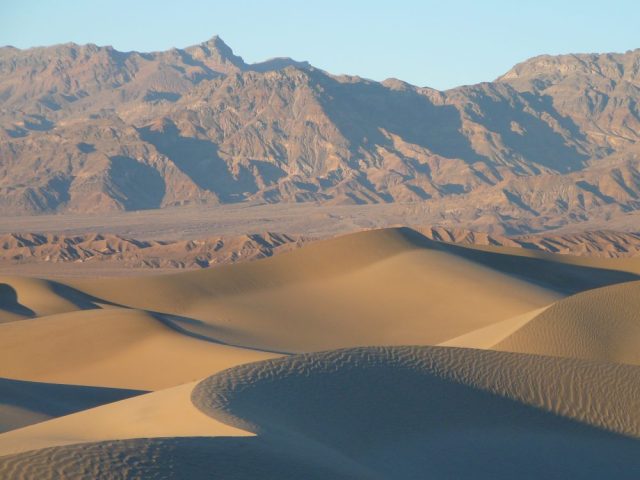
Known for getting unbearably hot during the summer—in fact, the record for the hottest place on earth was set in Death Valley—winter and spring bring pleasant temperatures which makes those seasons the ideal time to visit. Make the visitor center your first stop, where you can learn about the history, unique geology and wildlife of the park in the museum. Rangers can advise you on the best places to visit and give your kids a Junior Ranger program.
Consider a self-guided tour of locations used for the Star Wars movies, which were filmed before the area became a national park. Download the National Park app and select Death Valley National Park to use offline, then add the Star Wars audio tour for a map and information on each spot, which you can listen to in the car as you drive. Even if you’re not into Star Wars, the family will enjoy exploring the sand dunes, salt flats and canyons. Let the kids slide down the dunes, climb on rocks and run on the bright white salt at Badwater.
Where to Stay in Death Valley
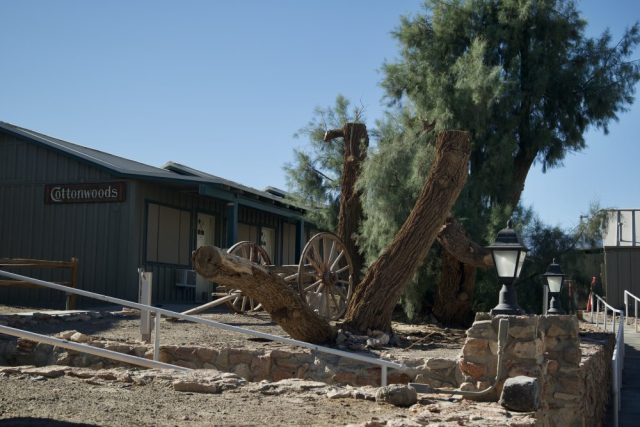
Death Valley National Park is so big, you need to stay in the park at night to avoid long (hot) drives during your stay. Fortunately, there are plenty of accommodation options, from luxe to rustic.
For a resort experience, stay at The Oasis Death Valley, located in the heart of the park at Furnace Creek, near the visitor center. The resort is split into two separate hotels, the four-Diamond rated Inn at Death Valley and the more laid-back Ranch at Death Valley. Stovepipe Wells Village, a comfortable, low-key hotel with an Old West vibe is also a great option.
There are also many camping sites in Death Valley National Park, some run by the National Park Service and others privately owned. One of the most popular campgrounds for stargazing, Mesquite Spring, is an hour north of Furnace Creek and has 40 first-come-first-served sites.
—Sarah McDonald
featured image by Jamison McAndie Jamomca via Unsplash
RELATED STORIES
National Parks That Bay Area Kids Love (& Awesome Cabins Nearby)
Stargazing 101: Your Guide to Mastering Astronomy with Kids
11 National Parks Perfect for Winter Expeditions (& Cozy Airbnbs Nearby)
Need some fresh ideas?
Subscribe to our weekly newsletter for expert parenting tips and simple solutions that make life instantly better.
By subscribing you agree to Tinybeans Terms and Privacy Policy
